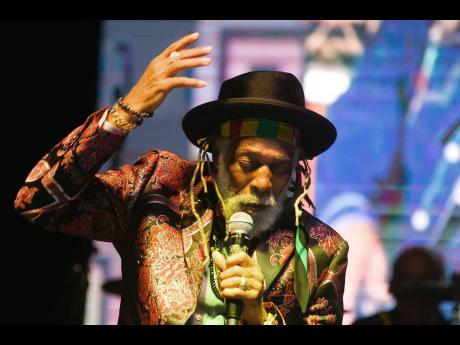Vintage voices | The beginning
Welcome to our new series, Vintage Voices. Jamaica’s rich musical legacy is due to the indelible contribution of our great musicians. In this new series, we speak to them and trace the history of the music with all who have helped to shape our present day musical landscape.
Today, motorcycles have become an ever-present nuisance in residential areas and even hospital zones in and around the Corporate Area.
Things were quite different in the ’60s and ’70s when the popular brands – The Quickly and The Honda S-90 were nowhere near as noisy and deafening. Big Youth, one of the pioneering deejays of the ’70s, seemed to have found the latter brand more customer-friendly as he chose to take one into the recording studio to capture its revving engine sound to form the introduction to his big hit – The S-90 Skank.
The recording roared to number one on the Jamaican charts.
According to Big Youth, whose given name is Manley Augustus Buchanan, he was inspired to do the recording after a near-fatal motorcycle crash as a pillion rider on that same brand. “A crash me crash offa the bike, yunno, when me reach right a Industrial Terrace and Spanish Town Road. A car lick me off. Dem have me pon a slab as a dead man because them sey me dead,” Big Youth revealed. The experience seemed to have caused a spiritual awakening in Big Youth as he continued to retrace the incident in an interview with me. “And a so me vision, and Jah sey ‘go tell the world bout rastafari’, and it mek me write S-90 Skank,” Big Youth said. The recording sent a warning to reckless motorcyclists: “But though you ride like lightening, if you ride like lightening, you will crash like thunder.” But it all seems to have fallen on deaf ears.
The sound system was Big Youth’s earliest springboard. “Me a hold the mike from ’69-’70. After that, a me a control everything. A me carry the Rasta movement go pon the sound, and a me come sey, ‘Live it up Jah, Chi-chi-wa-wa, some a dem a reminiah and some a seminiah’”, which became Youth’s signature chants. He was the first to popularise Rastafarian lyrics on Jamaican sound systems.
His first recording success came in 1972 with The Killer followed by Tippertone Rocking for the young producer Gussie Clarke. His amasing run of hits continued throughout ’72 and into ’74, with Chi-Chi-Chi Run, Screaming Target, Cool Breeze, Foreman vs Frazer, Dock of The Bay, Hit The Road Jack, Every Nigger is a Star, I Pray Thee, Facts of Life and Four Sevens – the majority of which were top 10 hits.
Still Very Active
Constantly touring and doing stage shows at home and abroad, Big Youth is very much as active now as he was in his early career, which began in the early ’70s. I asked him in a recent interview how he would compare the two periods, and he said that he is more concerned now with helping the youths rather than projecting his own career. “My present mission is to save the youths, but them have to help save themselves. So me a try me best with the Big Youth Foundation to do some things for the youths. Who we can give a scholarship to, we will give it,” he said. It was an inspired Big Youth, who drew on some of his self-penned lyrics, as we spoke, to reinforce his point.
“Unnu can’t live in foolishness
Because if unnu live in a folly
Unnu a go sorry
If you gone bad already
You done dead already
You gone from morgue to the cemetery”.
Artist of the year from ’72 to ’74 and the holder of seven songs on the Jamaican charts all at once – five in the top 10 – Big Youth is adamant that he hasn’t received the recognition he deserves. Basking in his favourite refrain, “Come on, maaaan!” he asserts that he deserves more recognition during Reggae Month, even more than others, for promoting and popularising reggae and Rastafari around the world. “A me say Jah Rastafaria when many other artistes neva waa say it. A me a the first Rasta phenomenon. While others were saying ‘yea yea yea’, me a say ‘If you coming from far, in a bus or a car, man I beg you, make love and not war’,” he said.
In an effort to restore and reassert his legacy, Big Youth has, in recent times, been restoring a mural of himself along Orange Street in downtown Kingston where he grew up. He was actually born Water Street in east Kingston in 1949, moved to 132 Matthews Lane in west Kingston, started school at Miss Goodridge along Hanover Street, then graduated to Stratford along Duke Street but stopped short of a technical entrance when he got immersed in sound system dances, which inspired his deejay aspirations and ultimately led him into the recording studio.



